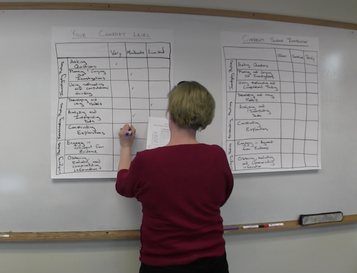Feedback

Observations lead to opportunities to provide feedback to teachers about the instruction in their classrooms.
IMMEDIATE & FACE-TO-FACE: Feedback is most powerful when it is offered directly after the observations (or as soon as possible). When feasible, we recommend face-to-face conversation as the most compelling way to deliver feedback.
STRUCTURED CONVERSATION: Following a regular process for delivery of feedback and making that process known to teachers turns the feedback session into a structured conversation about instruction. Giving and receiving feedback is a skill to practice. Scaffolding the conversation helps both supervisor and teacher feel more comfortable. Because feedback is part of a supervision cycle, we view feedback as an opportunity to engage in instructional conversations that will inform the next steps of the cycle. It is important that supervisors and teachers engage in conversation about what the supervisor observed, how the teacher interprets that, and what both feel makes sense for next steps.
SPECIFIC & MANAGEABLE: Feedback should not overwhelm, but should target one or two focus areas that a teacher might work on improving. Feedback should be grounded in concrete evidence from the observation, with the supervisor providing specific examples of instruction. Maintaining a focus on instruction can help avoid the feeling of personal critique. Conversations should be brief and to the point, efficiently following the structure laid out.
CONCRETE, ACTIONABLE NEXT STEPS: Based on feedback, supervisors and teachers should plan next steps based on what was observed. Next steps may include trying something different in class and/or engaging in a learning opportunity to build expertise.